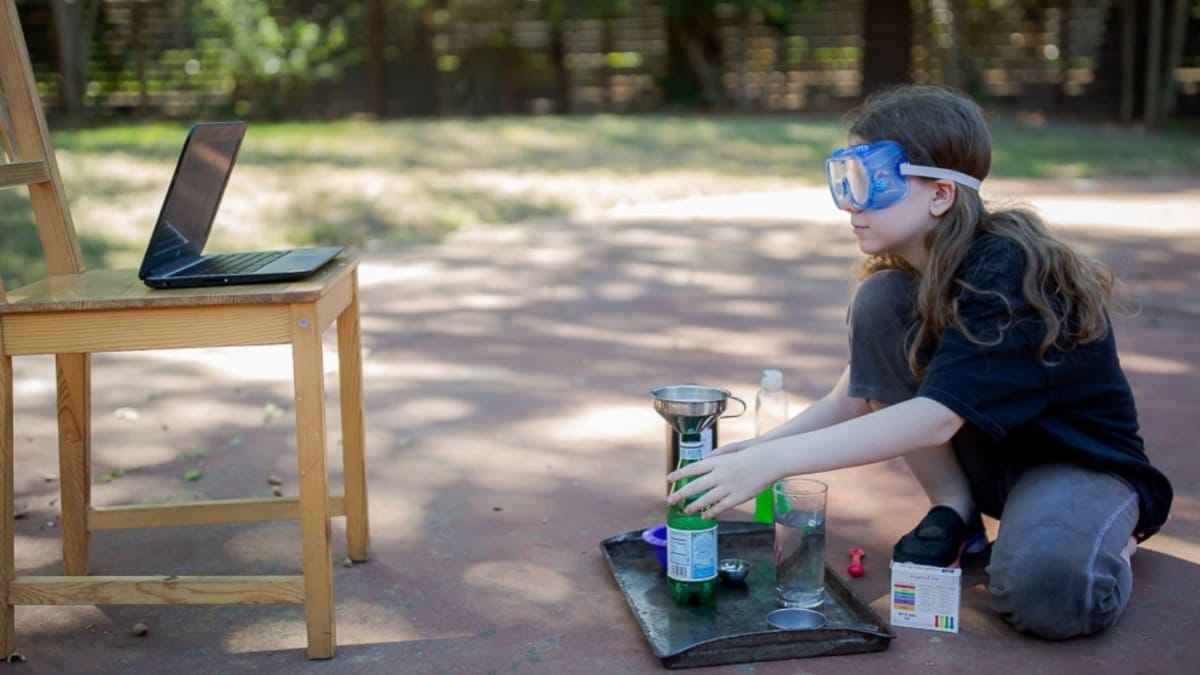By: Jomayra Herrera
It’s been a little over 3 months since I decided to recommit to focusing my investing efforts on education and economic mobility. When I made the switch over to Reach, I knew that a lot was changing in the education space and that the opportunity for innovation was huge.
That said, I underestimated the tectonic shifts that were happening below the surface to make the industry more interesting than ever before. Education, as many of us know it, where learning happens in the confines of 4 walls and led by a sage-on-the-stage teacher, seems like it’s close to becoming a distant memory.
I know that a similar sentiment is shared every 5 years or so, often led by the typical education reformer, but this time feels different. It feels like it’s coming from students, led by student voice, and at a time when bottom-up change feels possible. Below I lay out 7 key drivers in this change and 4 industry shifts that make the education market larger than ever before.
7 Key Drivers
Institutions no longer control access to knowledge: It’s no surprise that information is available anywhere now. Students are a simple google search away from getting access to the information they are looking for. The days of relying on a school to control what you should know are far from over. Just take the recent debate around whether critical race theory should be taught in classes. In this year, over 26 bills have been introduced across the US to define what is okay to teach in history classes in schools. Instead of accepting their fate, Gen Z took to TikTok to learn from creators they trust. In fact, #LearnOnTikTok has over 130B (!) views. These represent creators that range from certified teachers all the way to hobbyists that want to share information about what they love with a broader audience.
Delta in experience out-of-school and in-school is wider than ever: technological change is exponential and, by design, change in school systems is incremental. We are at a moment where we have students discussing the possibility of engaging with each other in the metaverse while still getting some of their content from a dusty projector from the early 2000’s. They are coming home to engage in immersive worlds that are built by their virtual friends halfways across the world, while also filling out their vocabulary worksheet with pen and paper. This is not to say that we haven’t come a long way in device penetration and ed tech in the classroom, but the rate of change is not comparable to what students are seeing outside of their classrooms and, understandably, that creates a ton of dissatisfaction.
This generation takes change into their hands: The current school-going population is quite the opposite of apathetic. They are on track to be among the most-educated generations in history and have a history of political activism. After the Parkland shooting, for example, students across the country mobilized to advocate for stricter gun laws. “The world failed us and we’re here to make a new one that’s going to be easier on the next generation. If you’re against that, then get out,” Cameron Kasky, March For Our Lives co-founder told Time. They take change into their hands and social media is their weapon.
Parents are dissatisfied and voting with their feet: In the last year, school enrollment saw the largest decline in over two decades. Parent satisfaction with K12 schooling also decreased by 10 percentage points and students who are homeschooled doubled. Some concerns are related to COVID, but many parents actually found their children performed as well, if not better, in an alternative setting.
COVID accelerated digital adoption: The breadth of ed tech tools that schools used in the past year exploded from an average 957 each month in 2019 to 1,327 in 2020. Nearly half of teachers said their ability to use technology had improved a lot during the 2020-21 school year and 60% of teachers, principals, and district leaders surveyed said their opinion of ed tech has become more positive over the past year.
Teachers want to be creative and have more options: My brilliant teammate Jennifer Carolan predicted the war for teacher talent over a year ago. With so many options ranging from tutoring to pods, to running their own courses on platforms like Outschool, schools now have to compete to attract and retain high-quality educators. Many educators get into the profession because they want to play a role in shaping the future generation and they love the creativity that comes with that work. That said, the demoralization that comes from having to fight against scripted curriculum and high-stakes testing is a major contributing factor for why they leave. Some educators have taken to TikTok to find news of creative expression like 54-year-old English teacher Claudine James who has garnered over 2 million followers for her short grammar lessons. Or Jeremy Rinkel, a high school social studies teacher, posted a TikTok video about himself to see how students would react. Rinkel noted in a recent Edutopia piece, “I hit a wall in my teaching where I felt like the relationship piece was lacking a little bit, and TikTok brought that back for me...there’s something there. The kids seem more engaged, and they want to know more about me.”
Questioning of standardized testing: Changes in curriculum and how time is spent in school have largely been influenced by the emphasis on standardized tests that are tied to performance evaluations, funding, and college entrance. The pandemic has created an opening to rethink what exactly goes into these tests. With schools closed in 2020, the Trump administration told states they did not have to administer these tests. The Biden administration announced the tests had to be given in 2021 BUT they could be shortened and the results did not have to be used for accountability purposes. In the latest gathering of the chief state school officers, there was a nearly unanimous call for more authentic assessments that can provide real-time information on student learning.
These factors have created a perfect storm to catalyze real change in the K-12 education system. This time, with the student at the center of it.
Four Industry Shifts
With student voice at the heart of education, all of a sudden (I) what is taught, (II) who can teach, (III) where it’s taught, and (IV) what is valued starts to expand, making the education industry larger than ever before.
What is taught: creation vs consumption - It’s estimated that about three-fourths of people under 18 play video games weekly and Roblox has nearly 200 million monthly users, with two-thirds of those users being of school age. And these kids are not passively playing - the 1% rule where it’s only expected that 1% of a site’s user will contribute content has been challenged by Gen Z. They want to engage and be active participants in their experiences. For example, Roblox had over 345K creators in 2020 alone. And TikTok, which has become one of the most downloaded apps globally, has seen that over 50% of its users have uploaded a video on the app. This generation expects to engage, create, and collaborate, which makes the old-school “sage on the stage” teaching style more painful than ever. Oh and not to mention that active learning is truly just more effective. Expect to see more schools willing to accept that a lot of learning can be done through projects, gaming, and other forms of immersive experiences and for entrepreneurs to respond.
Who can teach: redefining the teacher - I’ve heard the phrase “influence is the new accreditation” a lot lately. I’m not sure I totally agree that high-quality educators should be conflated with people who have large social media followers, but I do believe how we define who is an educator will become more expansive. There are subject matter experts on a range of topics that when complemented with tools and resources that support high-quality pedagogy can create incredible learning experiences for students. Edgi is a great example, which provides both student and creator-led courses and community that students are willing to pay for. They cover topics that have long been outside of the traditional K12 curriculum, but that we are seeing students want to engage with.
Where it’s taught: the Outschool effect - Students are increasingly looking outside of their school walls for content and community. The general belief that students do not want to learn outside of school or aren’t willing to pay for it is starting to be challenged by this generation. This is partially driven by a desire to learn content that is not offered by their school, but it is also that kids want to engage with other students who might not be in their zip code. In a time where we have access to information, ideas, and community all across the world, it’s possible that someone under the age of 18 might have more in common with someone halfway across the world than their next door neighbor. About 60% of Gen Z said online community support is very important to them, compared to only 48% of all other generations. They are also more likely to say they feel their online community better understands their passions than their friends or family. Relatedly, we’ve seen the rise of online learning communities like Fiveable, Studystream, and Inspirit that are building courses and community spaces that students are willing to pay for.
What is valued: rethinking what counts as credit - For so long, what counts as “academic credit” has been limited to courses that are accredited and offered by schools. With more content available online, I expect we will see that what counts as credit towards your learning will expand over time. For example, Readocracy works with education institutions to offer credit to students for what they’re consuming online, including articles, videos, books, and research papers. All of that contributes to your overall knowledge base and should be counted even if it might not happen within the context of a class or assignment. Over time, it should also include experiences that you might have outside of school like jobs, internships, side hustles, and even supporting your family - all of which we know contribute to mastery in important skills that students will need in college and the workforce.
When we start to question some of the historical constructs of education, the industry starts to get a lot more interesting and expansive. I’ve noticed this by the range of ideas that we’re starting to see enter the sector and the high-caliber talent that is excited to build it.
Final Thoughts
Dr. Mhiripiri-Reed, the Superintendent of Hopkins Public Schools, a district that recently did away with school resource officers because of student activism, said “Many of us adults are asleep. I think our young people — our kids, our teenagers, our mature K-12 learners — are awake. And what I fear is an educational revolt.”
Revolts can be scary, but they often create openings for catalytic change to happen. Education reform has historically come top-down through federal, state, or local leadership. This time it seems to be different, with students leading the charge. The fundamental what, who, where, and how are coming to question, creating an opening for innovative companies that exist and outside of the classroom to thrive.
Building something that helps to reinvent education? Ping me at jomayra@reachcapital.com






